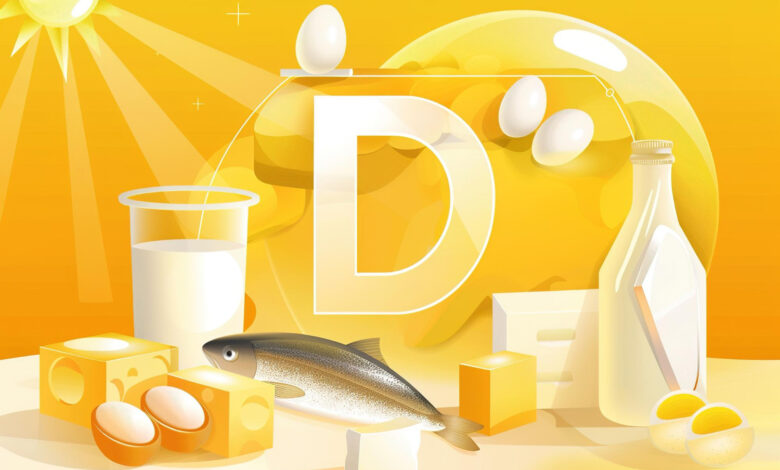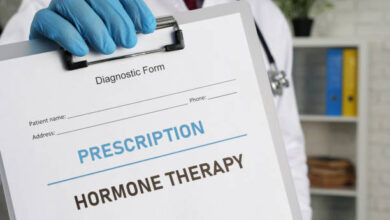Vitamin D Injection: Everything You Need to Know

Vitamin D is an essential nutrient that plays a critical role in maintaining bone health, supporting the immune system, and promoting overall well-being. While the body can naturally produce vitamin D through exposure to sunlight, many people struggle to maintain adequate levels due to factors like geographical location, lifestyle, or skin tone. In these cases, vitamin D supplements, including injections, can provide a more efficient and effective way to boost levels.
In this article, we’ll explore the role of vitamin D in the body, the symptoms and risks of deficiency, and the benefits of vitamin D injections. We’ll also examine who might need vitamin D injections, how the procedure works, and what you should consider before seeking this treatment.
Understanding Vitamin D and Its Importance
Vitamin D, often called the “sunshine vitamin,” is a fat-soluble vitamin that helps the body absorb calcium and phosphorus. These minerals are essential for maintaining strong bones and teeth. Vitamin D also plays a role in muscle function, immune support, and inflammation reduction.
The body synthesizes vitamin D when the skin is exposed to ultraviolet B (UVB) rays from sunlight. However, there are several factors that can limit the production of vitamin D:
- Limited sun exposure: People who live in northern latitudes, work indoors, or avoid the sun due to skin cancer risks often don’t get enough sunlight.
- Skin tone: Individuals with darker skin have more melanin, which reduces the skin’s ability to produce vitamin D.
- Age: As people age, their skin becomes less efficient at producing vitamin D.
- Diet: There are few natural food sources of vitamin D, so it can be difficult to get enough from diet alone.
Symptoms and Risks of Vitamin D Deficiency
Vitamin D deficiency is more common than many people realize. According to the World Health Organization, more than 1 billion people worldwide have low levels of vitamin D. This deficiency can have significant health implications, including:
- Bone health issues: Vitamin D helps regulate calcium and phosphorus levels, which are crucial for strong bones. Prolonged deficiency can lead to soft bones (osteomalacia) in adults and rickets in children.
- Increased risk of fractures: Vitamin D deficiency can weaken bones and increase the risk of fractures, especially in older adults.
- Weakened immune system: Vitamin D plays a key role in immune function. Deficiency can increase the likelihood of infections, autoimmune diseases, and chronic illnesses.
- Mood disorders: Low levels of vitamin D have been linked to mood disorders such as depression and seasonal affective disorder (SAD).
- Fatigue and muscle weakness: Many people with low vitamin D levels experience fatigue, muscle weakness, and even joint pain.
In severe cases, vitamin D deficiency can lead to osteoporosis, a condition where bones become weak and brittle, making fractures more likely. Furthermore, research suggests that vitamin D may play a role in preventing conditions like heart disease, diabetes, and certain cancers.
Benefits of Vitamin D Injections
When vitamin D levels are low, oral supplements can help restore the body’s levels, but in some cases, injections may be a more effective solution. Here are the key benefits of vitamin D injections:
1. Rapid Absorption
Vitamin D injections offer a quick and efficient way to raise vitamin D levels in the body. Oral supplements must pass through the digestive system, where they may be less effectively absorbed, especially in individuals with gastrointestinal issues or malabsorption disorders like celiac disease or Crohn’s disease. Injections bypass the digestive system, delivering the vitamin directly into the bloodstream for faster absorption.
2. Long-Lasting Effects
One of the main advantages of vitamin D injections is that they tend to have long-lasting effects. Depending on the dosage, a single injection can raise vitamin D levels for several months. This is particularly beneficial for individuals who have difficulty adhering to a daily supplement regimen or who need to maintain optimal vitamin D levels over a long period.
3. Convenient for High-Dose Needs
Some people may require high doses of vitamin D to correct a severe deficiency or to manage a chronic condition. Vitamin D injections can deliver these higher doses safely and more effectively than oral supplements, especially when large amounts are required over a short time period.
4. Improved Bone Health
For those at risk of osteoporosis or fractures, vitamin D injections can help maintain healthy bone density and reduce the risk of bone-related issues. This can be particularly important for postmenopausal women, older adults, and people with conditions that affect bone metabolism.
5. Immune Support
Vitamin D injections can enhance immune function by ensuring optimal levels of the nutrient, which is crucial for fighting infections and supporting overall immune health. People with autoimmune disorders or those who frequently experience infections may benefit from improved immune system response with regular vitamin D injections.
Who Should Consider Vitamin D Injections?
Vitamin D injections are not necessary for everyone. In most cases, people can maintain adequate levels through sun exposure and oral supplements. However, certain individuals may benefit from injections, particularly those who:
- Have severe vitamin D deficiency that does not respond well to oral supplements.
- Suffer from malabsorption issues that prevent proper absorption of oral vitamin D.
- Are at high risk of bone diseases such as osteoporosis.
- Have autoimmune conditions or chronic illnesses where vitamin D is a key factor in managing symptoms.
- Live in regions with limited sunlight, especially during winter months.
- Are older adults with reduced ability to synthesize vitamin D from sunlight.
In some cases, healthcare providers may also recommend vitamin D injections for individuals recovering from certain surgeries, like bariatric surgery, where the absorption of nutrients is compromised.
The Procedure: What to Expect from a Vitamin D Injection
The process of receiving a vitamin D injection is relatively simple and quick. Here’s what to expect:
- Consultation: Before receiving a vitamin D injection, a healthcare provider will typically assess your vitamin D levels through a blood test. Based on the results, they will recommend the appropriate dosage and frequency of injections.
- Injection: Vitamin D injections are administered intramuscularly, typically in the buttocks or upper arm. The procedure is quick and involves minimal discomfort. Some people may experience mild soreness at the injection site.
- Post-Injection Care: After receiving the injection, you can resume normal activities immediately. There are usually no significant side effects, though some people may experience minor bruising or redness at the injection site.
The frequency of injections will depend on your individual needs and your healthcare provider’s recommendations. In some cases, a single injection may be sufficient to raise vitamin D levels, while others may require additional doses.
Potential Side Effects and Risks
While vitamin D injections are generally safe, there are potential side effects and risks to consider:
- Hypercalcemia: Excessive vitamin D can cause a condition called hypercalcemia, where calcium levels in the blood become too high. Symptoms include nausea, vomiting, confusion, and in severe cases, kidney damage.
- Allergic Reactions: Some individuals may have an allergic reaction to the injection, though this is rare. Symptoms of an allergic reaction include swelling, itching, and difficulty breathing.
- Infection: Like any injection, there is a small risk of infection at the injection site. It’s important to receive injections from a licensed healthcare professional to minimize this risk.
It’s essential to follow your healthcare provider’s recommendations and not exceed the prescribed dose of vitamin D. Over-supplementation can be harmful, leading to toxicity and health complications.
Alternatives to Vitamin D Injections
If you’re not a candidate for vitamin D injections or prefer alternative methods, there are several other ways to boost vitamin D levels:
- Oral Supplements: Vitamin D supplements in the form of capsules, tablets, or liquid drops are widely available and can effectively raise levels when taken as directed.
- Fortified Foods: Many foods are fortified with vitamin D, including milk, orange juice, and cereals. Adding these foods to your diet can help improve your intake.
- Sun Exposure: Spending time outdoors in the sunlight, especially during peak UVB hours (10 a.m. to 3 p.m.), can naturally boost vitamin D levels. However, sunscreen and clothing block UVB rays, so careful balance is needed.
- Primal multivitamins are formulated to deliver essential nutrients that might be missing from a typical modern diet. Unlike conventional supplements, primal multivitamins focus on providing bioavailable forms of vitamins and minerals, ensuring optimal absorption and effectiveness. They are designed with a holistic approach, catering to individuals following primal or paleo-inspired lifestyles, emphasizing whole foods and natural sources. By combining vitamins like D, C, and B-complex with minerals such as magnesium and zinc, these multivitamins support energy levels, immune function, and overall well-being, offering a convenient way to fill nutritional gaps and maintain long-term health.
Conclusion
Vitamin D injections can be a highly effective solution for individuals with severe deficiencies or absorption issues. They offer rapid absorption, long-lasting effects, and are particularly useful for those who require high doses of vitamin D to maintain optimal health. While injections are not necessary for everyone, they can provide a convenient and reliable alternative for those unable to get enough vitamin D through sunlight, diet, or oral supplements.





